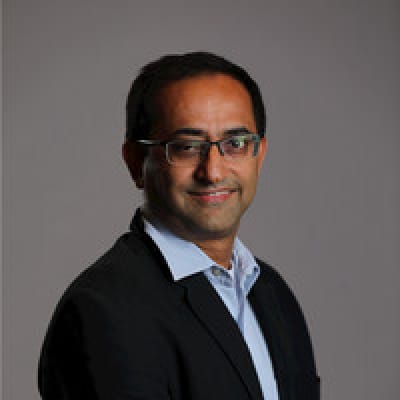A suitable psychosocial environment in which the doctor-patient interaction takes place must form a key communication strategy for doctors
Poor doctor-patient communication has been found to be responsible for nearly 2000 deaths and a loss of $1.7 billion, according to a study some years back. In fact, doctors often overestimate their communication abilities as brought out in another survey. The survey revealed that while 75 percent of doctors believed themselves to have communicated satisfactorily with their patients, only 21 percent of patients thought the same. It goes without saying that effective doctor-patient communication is not only the cornerstone of doctor-patient relationship, but also plays a pivotal role in shaping eventual patient outcomes. And trust is an inevitable building block that molds and shapes that relationship. Moreover, patient trust has even been considered to be important for higher patient satisfaction regardless of clinical outcomes.
So, what are some key communication strategies that doctors can adopt with a view to building trust and improving patient care?
Create a care environment conducive to patient-centered communication
First of all, creating a suitable psychosocial environment in which the doctor-patient interaction takes place must form a key communication strategy for doctors. The environment must be such that it encourages patients to open up and relate their medical condition freely and fully before the doctor. In other words, a doctor’s own verbal intelligence is as critical as the ability to induce or extract sufficient responses from patients. With properly-phrased open-ended questions in the language sans jargons, coupled with polite and empathetic listening, a doctor can draw the patient into a meaningful conversation and get sufficient clarity on the latter’s condition. Only then would he be able to diagnose and treat in the best manner possible. From time to time, doctors could also repeat certain points in order to check whether the patient was following his observations, instructions and advice completely, or only partially.
Develop a nuanced understanding of Social Determinants of health
Second, in addition to clinical conditions of a patient, doctors must also understand the complexities and fallout of Social Determinants of health (SDOH) that too impact patients’ health. SDOH have been said to account for 30 to 55 percent of health outcomes. According to WHO, some of the SDOH are: income and social protection, education, unemployment and job insecurity, working life conditions, food insecurity, housing, basic amenities and the environment, early childhood development, social inclusion and non-discrimination, structural conflict, and access to affordable health services of decent quality. So, going beyond visible clinical and socio-economic conditions of a patient, doctors must have sufficient perceptiveness in order to get a sense of the material and physical as well as social and political conditions that may have aggravated a medical condition of a patient if not been directly responsible for it. Additionally, doctors would also do well to remember that patients from challenging socio-economic circumstances or lower racial or caste backgrounds in case of India would already have a lower degree of trust as well as poorer communication skills. So, to make up for this natural deficiency, doctors would need to try harder with such patient populations.
Cultivate non-verbal communication competencies
Third, when face-to-face with a patient, doctors must also cultivate non-verbal communication skills while being mindful of the cultural, gender and other socio-emotional backgrounds or even barriers vis-à-vis their patients. So, a doctor should be careful with their facial expressions, tonality of voice, posture, eye movement, proximity and physical spacing, touch etc. A smiling and understanding face with a sufficient degree of eye contact, periodic nodding acknowledging a patient’s account while exuding warmth and empathy are all ingredients of successful non-verbal communication between doctors and their patients. At the same time, doctors would also need to develop a fair degree of understanding of socio-cultural particularities, culture and class-specific verbal and non-verbal cues, belief systems, customs, prejudices, among others. Research has shown that there was higher patient satisfaction when doctors smiled frequently, maintained eye contact with the patient, leaned forward, had an expressive tone of voice and face, and gestured enough. Conversely, if doctors smiled less and looked away, it even leads to diminishing of a patient’s physical and cognitive functioning, hardly appropriate for superior patient outcomes in the end.
Maintain integrity and complete transparency in communication
Fourth, doctors must also maintain absolute integrity during their conversation with patients and their relatives. While explaining fully the diagnosis and the line of treatment for a given condition, they should also clearly spell out why a certain mode of treatment has been adopted and why others avoided it. Also, while expressing themselves in optimistic language and tone, they should be truthful about the possible adverse effects and prospects of recovery. This applies especially in conditions where a surgical procedure may be needed for a patient, minor or major. Simply speaking, doctors should be able to elucidate the pros and cons of an upcoming operation well enough ensuring that only the prior obtaining of an informed consent would pave the way for a go-ahead for the desired procedure. Today doctors are increasingly facing court cases and lawsuits for medical negligence and surgeries having gone wrong. So, effective communication skills also serve as a safeguard for a doctor’s professional standing, credibility and repute. With e-consent tools increasingly finding traction, doctors could employ such technologies. Furthermore, doctors would also need to be trained adequately in breaking bad news to patients and their relatives. There are established rules and protocols that make this naturally unpleasant exercise somewhat easier for them.
We need to remember that a good doctor may not be an effective communicator. Therefore, by way of adoption of these communication strategies, doctors can not only build greater trust with their patients but also deliver better patient care while also improving their performance record. And effective communication has also been linked with medication compliance and revisit rates, critical to both patients and their doctors.
Also read: Lack of data is denial of rights of persons with disabilities


















Add Comment